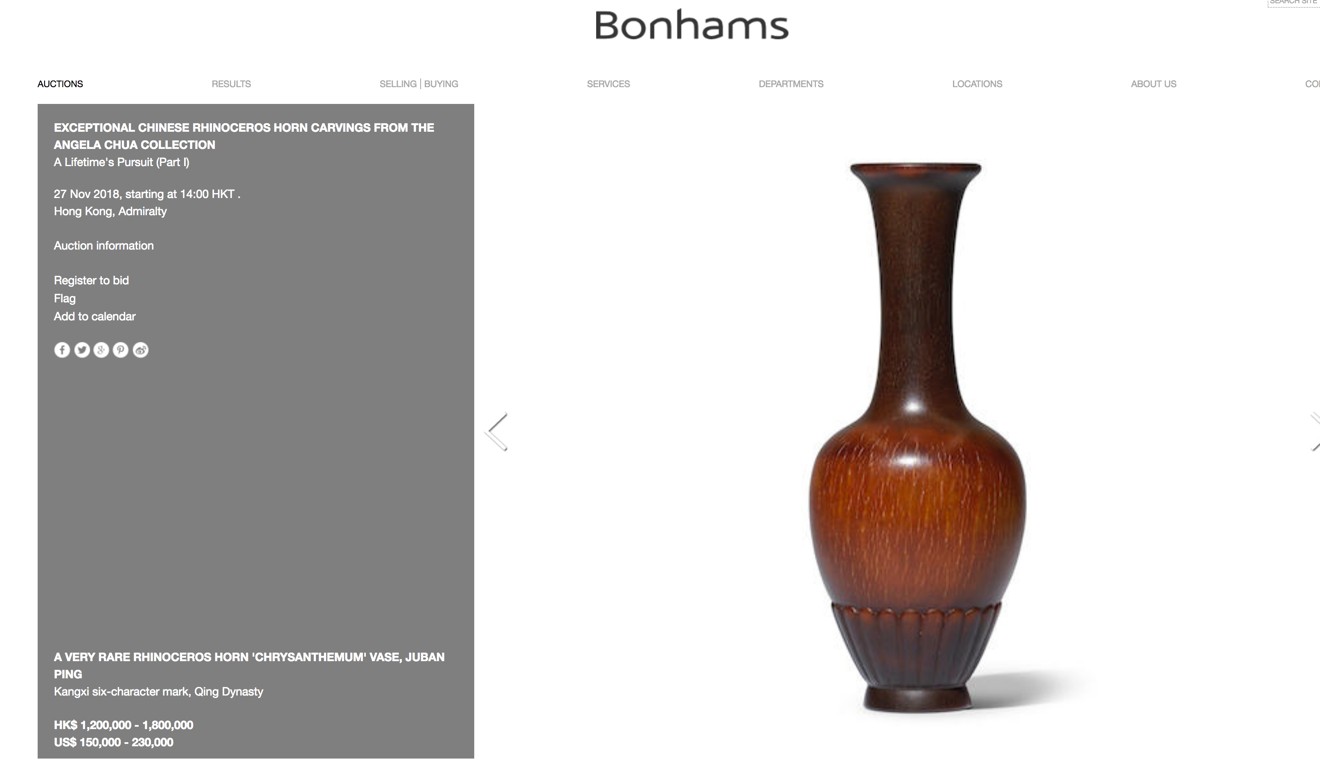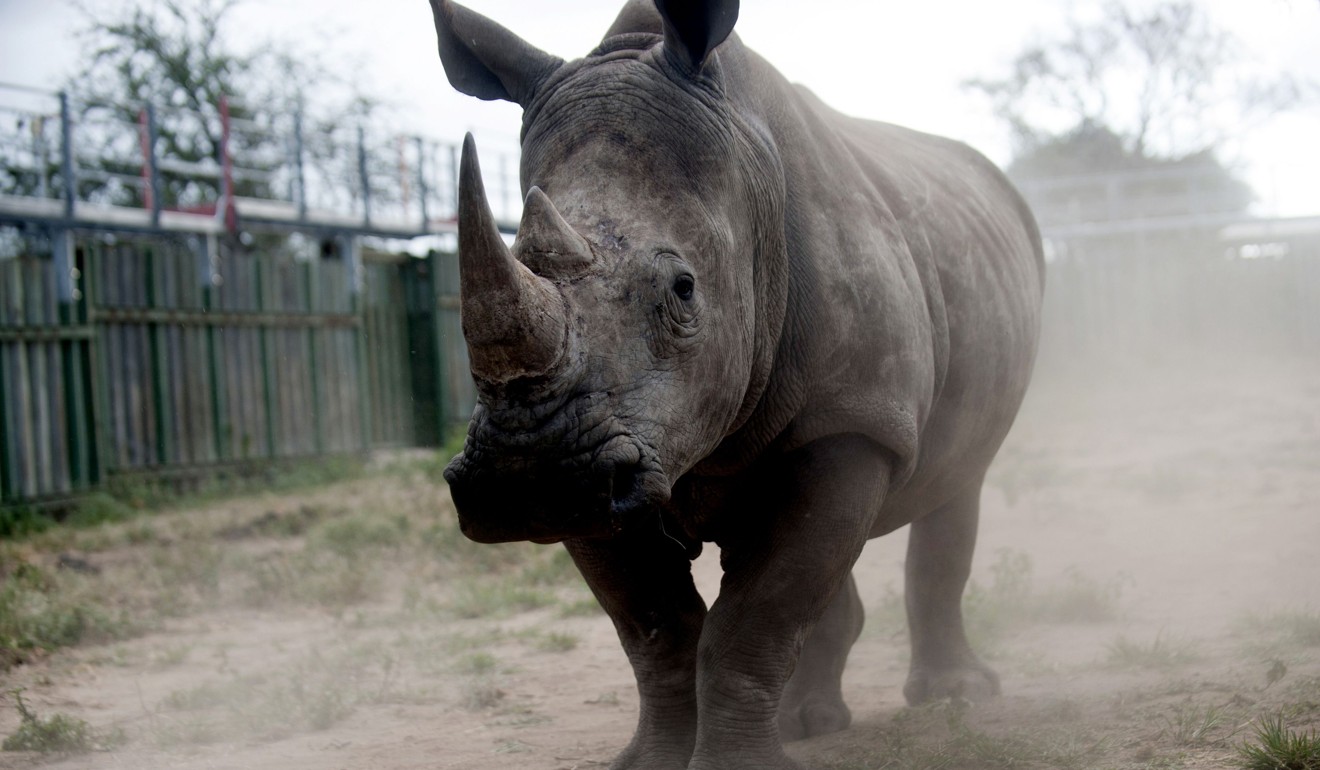
Bonhams comes under fire ahead of Hong Kong rhino horn auction
- Environmentalists say the sale will stimulate future demand for rhino horn antiques
- Auction house is ‘completely out of touch with reality’

Auction house Bonhams has come under fire from environmentalists over its sale later this month of a collection of rhino horn carvings.
The collection – titled “Exceptional Chinese Rhinoceros Horn Carvings from the Angela Chua Collection” – is due for auction at Bonhams’ Admiralty auction house in Hong Kong on November 27.
The sale comprises 21 lots and is mostly made up of libation cups – communal drinking vessels that were used on important ceremonial occasions in the 17th and 18th centuries.
Environmental organisation WildAid says it was shocked by the sale and is calling on Bonhams to cancel the auction.
“To be auctioning off not just one, but over 20 lots of rhino horn, Bonhams must be completely out of touch with reality,” says Alex Hofford, a wildlife campaigner at WildAid Hong Kong.

Hofford says the sale will stimulate future demand for rhino horn antiques, as well as for counterfeit rhino horn antiques (new rhino horn passed off as legal older specimens), thus contributing to the ongoing poaching and possible extinction of an iconic endangered species.
“Anyone who reads the news will know that rhino poaching rates in South Africa persist at dangerously high levels to satisfy not only the illegal [demand from the] traditional Chinese medicine market, but also a thriving market in China for counterfeit antiques carved from horns of freshly slaughtered rhinos,” he says.
Rhinoceros poaching is still at crisis levels in South Africa, which has the world’s largest population of rhino. A total of 1,028 rhinos were illegally killed in the country in 2017, 26 fewer than in 2016 but far above the 13 killed in 2007, according to wildlife trade monitoring network Traffic.

Bonhams’ Chinese Works of Art department says carvings made from rhinoceros horn are part and parcel of China’s cultural history.
“They were particularly admired during the Ming and Qing dynasties from the 16th to the 19th century, a time when rhinoceros were not deemed to be endangered. Such carvings were made for the imperial court as well as to the literati and therefore form an integral part of China’s cultural heritage,” it says.
Bonhams says all the rhinoceros horn carvings it offers are antique, carry the necessary CITES (Convention on International Trade in Endangered Species) licenses and adhere to strict laws and regulations.
“Bonhams fully supports international efforts to protect the rhinoceros,” it says.
Ivory and rhino horn products from any period should be banned from public trade and auction
Under current Hong Kong law, the import and re-export of pre-CITES rhino specimens – that is, rhino horns that were in existence before the convention came into effect in July 1975 – must be supported with documentary proof such as a pre-CITES certificate issued by the previous country of export.
Verifying the authenticity of rhino horn pieces requires expensive and lengthy carbon testing.
Auction houses are under growing pressure to stop sales of rhino horn items. Christie’s does not sell any items which include rhino horn.
“Christie’s does not accept hunting trophies from endangered species and discourages the sale of hunting trophies from non-endangered species,” it said.

A number of other Hong Kong auction houses often offer individual pieces of Chinese works of art made from rhino horns. In April, for example, Sotheby’s sold a rhino horn cup dated from the 16th to 17th centuries for HK$1.75 million (US$223,000).
Ma Weidu, a Chinese antique collector, says a total ban of rhino horn products at auction needs to be implemented.
“Ivory and rhino horn products from any period should be banned from public trade and auction,” says Ma, the founder of Guanfu Museum in Beijing, one of China’s first private museums.
Craftsmen in Asia, particularly China, used to carve rhino horn to create highly prized ornaments including elaborate libation cups.
In October, the Chinese Government overturned a 25-year ban on rhino horn and tiger bones, saying they would be allowed to be used in “qualified hospitals by qualified doctors”.
But this week it announced it was postponing that move following a wave of protests from environmental groups.